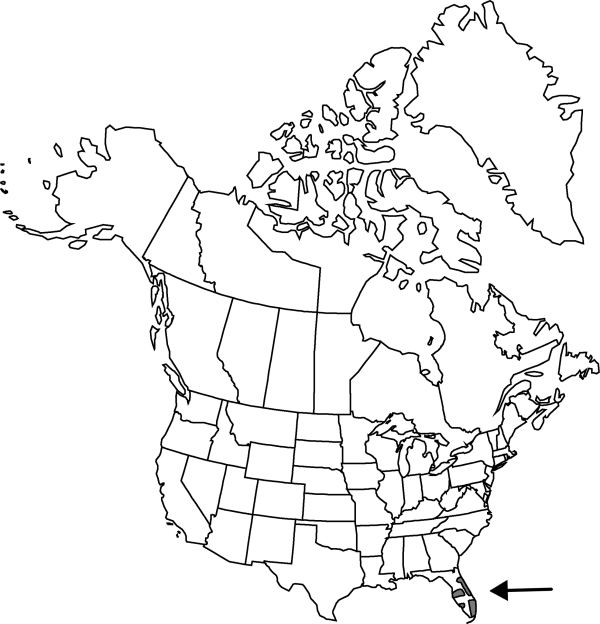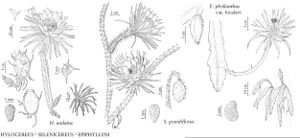Hylocereus undatus
in N. L. Britton, Fl. Bermuda, 256. 1918.
Plants sprawling or clambering over rocks, shrubs, and trees. Stems usually sharply 3-angled, to 500+ × 4–7.5 cm; ribs with undulate margins and gray, hornlike bark; areoles 2 mm diam. Spines 1–4 per areole, brownish gray, inconspicuous. Flowers fragrant; outer tepals white, outermost strongly reflexed, midstripes yellowish green; inner tepals white, broad, oblanceolate; filaments 50–75 mm; style cream, 175–200 mm. Fruits spheric to oblong. Seeds 2 × 1 mm. 2n = 22.
Phenology: Flowering year-round.
Habitat: Disturbed sites in sandy soils [tropical deciduous and semideciduous forests]
Elevation: 0-50 m
Distribution

Introduced; Fla., Mexico, West Indies, Central America, n South America
Discussion
Hylocereus undatus is sporadically naturalized in tropical and subtropical regions worldwide where it is cultivated for its large, edible fruits and beautiful flowers, which are among the largest in the cactus family. In Florida, H. undatus has escaped from cultivation in nine counties, forming large colonies in some areas. Individuals of this species grow prolifically and may soon overrun their substrate. Whether populations of H. undatus in the United States are merely persisting or are also reproducing sexually remains unclear.
The vernacular name night-blooming cereus has been applied to several genera of cacti with large, nocturnal flowers.
Selected References
None.
Lower Taxa
"thick" is not a number. "thick" is not a number. "broad" is not a number.
